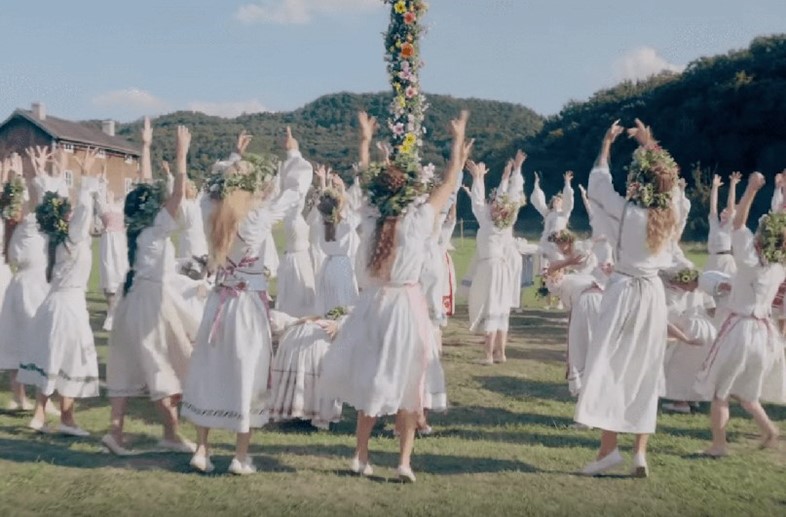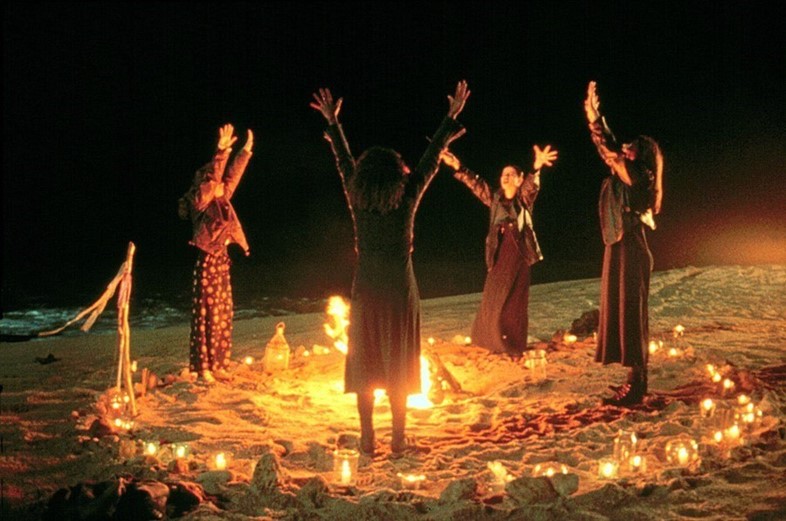The May Day festival marking the start of summer has been celebrated since ancient times. Here are rituals to celebrate Beltane and build a stronger relationship with nature, others and ourselves
As the sun continues its slow, but steadfast thawing of the earth, and the days extend their light a little beyond the dark noon, the breeze of Beltane announces its long-awaited presence. Celebrated on May 1 between the spring and summer equinox, Beltane has been a joyful celebration since ancient times. Rooted in ancient fertility festivals traced back to the Greco-Roman Hellenistic period, Beltane is imbued with an energy of love and harmonious union. It is typically a time for handfasting, wedding ceremonies, fertility rituals and rites of renewal. May is a kind of fleshy rebirth, encouraging us to emerge into new beginnings.
Beltane rituals remain an important part of our folkloric history. Inherent in our own nature, ritual allows for a stronger relationship between ourselves and others – and, as these following Beltane rituals suggest, an opportunity to connect to the joy and power of the natural world.

DANCE AROUND A MAYPOLE
The maypole, the more well-known symbol of Beltane celebrations, originates from the ancient Roman festival “Hilaria” – a joyful rite of merriment that included dancing around the Phrygian pine tree of Attis. Pagans believe the gods reside in wood, and thus, dancing around the maypole is in essence a dizzying dance around the ancient Gods, to ensure that everyone was connected or woven into the renewing forces of nature and the divine. Such performances are the echoes of ancient dances around a living tree in spring rites designed to ensure fertility.
Southern European and Italian tradition celebrates the ripeness of May by tying ribbons and lemons around flowering branches. If you don’t have a maypole to spare, you can adorn a tree in ribbons, or strung lemon, and dance around it until its branches begin to morph into each other and the ribbons blur into a single velveteen haze, whilst you sing a traditional Maypole incantation: “Round a round we go, weave a weaving watch it grow, bring us joy today, dance the lusty song of May”.

SERPENT MAGICK
In the mountainous region near Cocullo, just east of Rome, inhabitants gather with offerings and grain, as local charmers lure forth live snakes to be carried through the village on May 1. Traceable to the ancient rites of the Marsi who worshipped the snake goddess Angizia, this Italian pagan tradition honours the regenerative powers the snake represents.
As well as being able to shed their skin, signalling renewal and rebirth, the ancients also revered the snake for underworld power. Penetrating the earth, which was considered by the ancients as fertile region, the snake was believed to possess its inner secrets of the depths below. To connect to the snake goddess Angizia, gather grains onto the earth and ask the goddess how you might find serpentine fluidity in your own life, and how movement, renewal and the richness of the underworlds, might serve you.

FIRE MAGICK
Derived from the Celtic God ‘Bel’, meaning ‘the bright one’ and the Gaelic word ‘teine’ meaning fire, Beltane means bright fire: a fire bright enough to continue our traipsing out of the forest of winter and towards the ever beckoning sun. Fire magick is a potent way to connect to the power of Beltane: simply light a candle and imbue it with wishes for strength, love and renewal. Dose it in frankincense and honeysuckle oil, and let it burn all the way through.
Traditionally, ash from sacred bonfires lit at Beltane was scattered over the fields to ensure fertility, with several Welsh customs ordering the taking home of Beltane bonfire ash for protection. Once your candle has burned through, be sure to keep any wax and ash in the entryway of your home for protection.

GO “MAYING” AND ADORN YOUR DOOR WITH THE EARTH
In the Dictionary of Faiths & Folklore, W. C. Hazlitt recounts the ancient Roman tradition of “Maying” on April 30, a practice which entails collecting branches for the first of May. A similar custom is observed in some areas of Cornwall, where people decorate their doorways on the first of May with collected boughs of sycamore and hawthorn. Decorate your door with neighbouring corresponding Beltane shrubs and fresh flowers, like ivy, hawthorne, mugwort, daisy, lavender and foxglove.
The month of May, second to the revels of midsummer’s eve, has long been associated with the gathering of fae, who will no doubt appreciate your floral-door adornments. If however, the fae are meddling, Hilderic Friend in 1884 Flower Lore, prescribes: “a pint of water and marygoyle water with flowers gathered from the east”.

COLLECT DEW: THE MAY DAY ELIXIR
Another significant custom is the collection of dew in the early morning on May 1. Among the ancient Romans, dew was sacred to the moon goddess Diana, who was also known as the Dewey One. Her dew was believed to be the blood of the moon, used In Italian Witchcraft as holy water believed to bestow good fortune throughout the year. In some parts of Britain, girls leave just before sunrise on May Day to collect dew from the plants as it is believed it will keep one’s complexion beautiful all year around, removing any blemishes. Be sure to leave in the early hours of the morning to collect your May shimmering blood of moon elixir.

ODE TO THE GREEN MAN & MAY QUEEN
The Green Man is understood by pagans as the primal consciousness of the plant kingdom, representing one of the oldest spiritual concepts of animism: the belief that God is nature, rather than something outside of nature. With the rise of Christianity, the attention given to the Green Man began to diminish, though careful examination of pillars inside old churches and cathedrals in Europe revealed Green Man faces hidden within the ornamentation.
Where the May Queen, mother of the earth, embodies the soils – the Green Man represents the vegetation that lives above the land. During Beltane, the two wed, as the May Queen becomes pregnant: bringing forth fresh crops. In ancient times, couples would spend the night in the woods together enacting the sacred rites of the Gods, for any child being born from this sacred union is said to have been raised as a child of the Gods.

